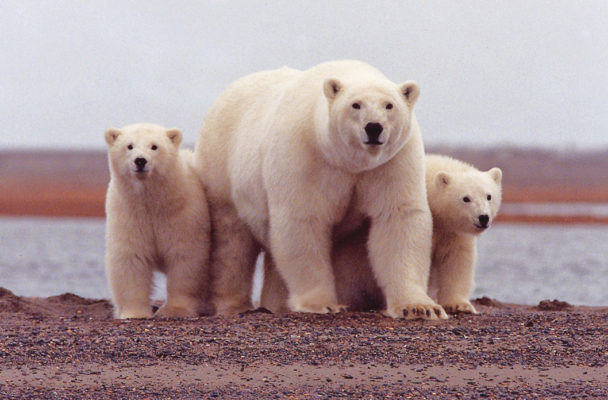
If there’s a poster child for Arctic animals affected by climate change, it’s the polar bear. But the data behind those famous furry faces tells a more complicated story.
Dr. Eric Regehr is a biologist with the U.S. Fish and Wildlife Service in Anchorage. He’s the lead author of a new study on the global conservation status of polar bears. Assessments of the conservation status of polar bears have been done before, but this is the first one that takes a databased, quantitative approach.
The study establishes a relationship between sea ice reduction and polar bear population numbers. The researchers then used that trend to predict how the world’s 26,000 polar bears will fare in the future.
“Putting together all available data, and making some informed projections on the basis of those data, do suggest that there is a high probability that the global population of polar bears could face reductions of up to one-third or greater in the next 35 to 40 years,” said Regehr.
However, not all polar bear numbers are suffering, at least in the short term. There are nineteen individual subpopulations of polar bears across the Arctic. Some of these subpopulations are stable, and a few are even growing.
One group that’s thriving is the Chukchi Sea subpopulation, which includes Western Alaska and the Russian coast across the water.
“The waters are shallow, they’re nutrient rich; there are a lot of seals, ringed seals and bearded seals, out there for the polar bears to eat,” said Regehr. “And so, other studies suggest that, despite the fact that the Chukchi Sea region has exhibited a loss of Arctic sea ice the bears in that region appear to be faring quite well, currently.”
But their neighbors to the East, the South Beaufort subpopulation, are declining in number.
“The continental shelf is much narrower, the region is less biologically productive,” said Regehr. “And scientific studies there suggest that the polar bears have been negatively affected by sea ice loss. So there is a lot of variation in their status across the Arctic.”
Despite this variation, Regehr says the decline in population numbers expected in the next few decades is likely to affect bears in all regions of the Arctic.
“Fundamentally, at the end of the day, polar bears require sea ice to do what basically makes them bears, which is killing and eating seals,” he said.
That means even healthy subpopulations, like the Chukchi Sea, bears face long-term threats.
“Just logically, there’s some point at which a polar bear in the Chukchi Sea may not have enough days of the year on sea ice catching seals to get the nutrition they need and be healthy,” he said.
Regehr doesn’t know when that time will come, but he’s already seeing the bears spend an extra month on land each year. And there’s evidence that the sea ice loss is affecting not just the polar bears in the Chukchi Sea, but those that hunt them. Regehr says polar bear harvest numbers in the region have been declining for the past few decades.
He hopes that as polar bears in the Arctic continue to be monitored, his team’s study will set a precedent for more quantitative assessments.
